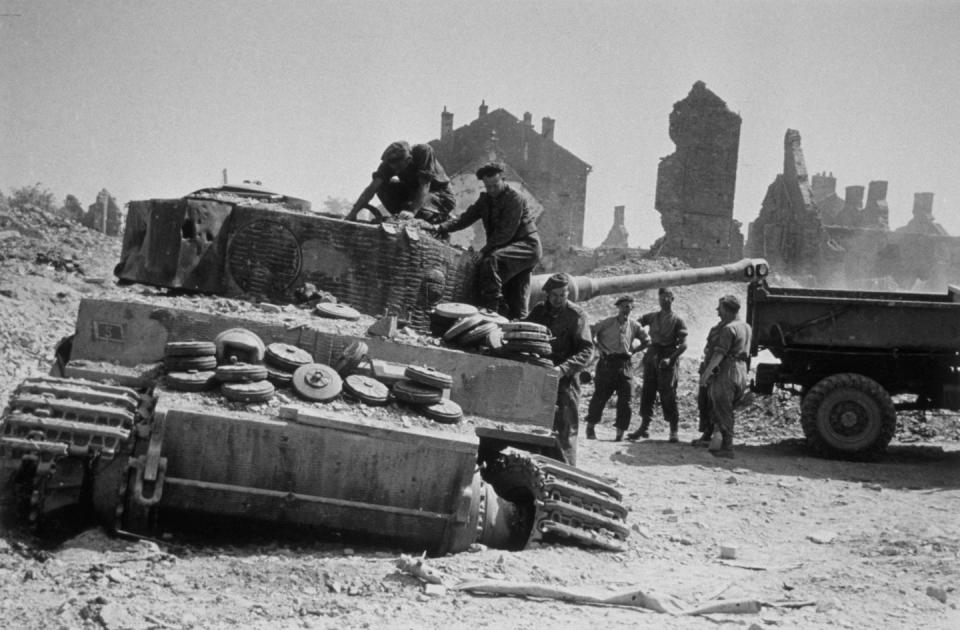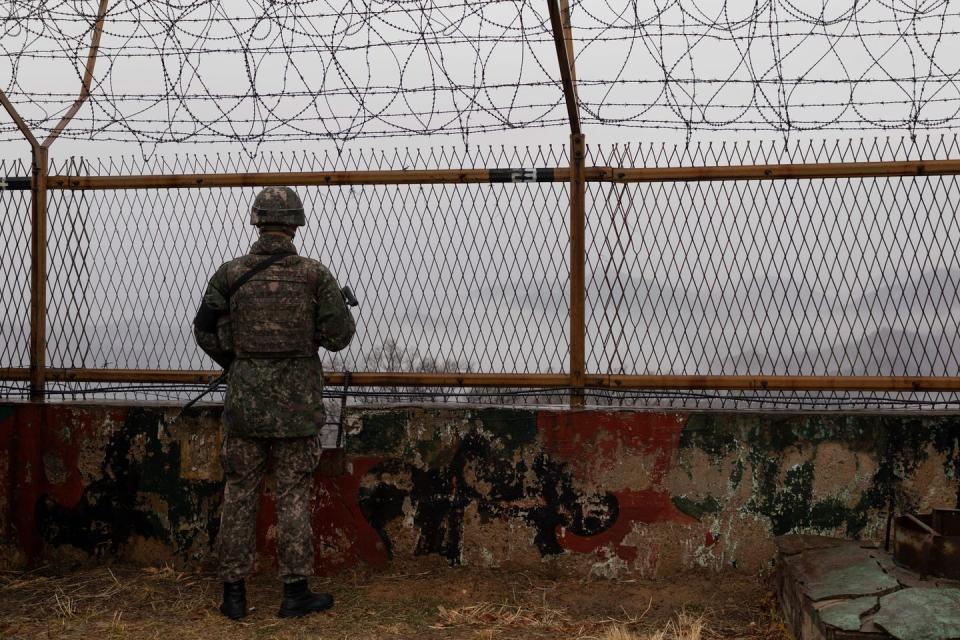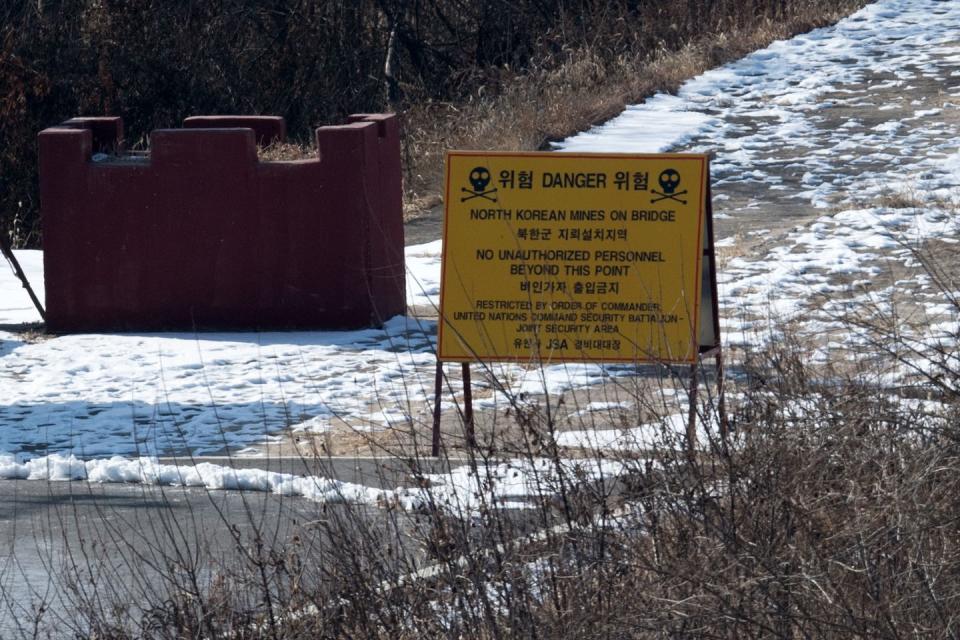The Biden Administration Will Keep Rules in Place Allowing U.S. Troops to Deploy Land Mines
- Oops!Something went wrong.Please try again later.
The Biden administration will keep rules in place allowing U.S. troops to deploy land mines.
The rules will remain pending a review into the land mine issue.
U.S. forces can use land mines as long as they’re equipped with self-deactivating mechanisms.
President Joe Biden’s administration will retain relaxed rules on land mines, pending the result of a review. The loosened regulations allow U.S. forces to use land mines as long as they’re equipped with self-deactivating mechanisms. The move is counter to a general shift against land mines worldwide, which critics blame for civilian casualties in former conflict zones.
➡ Join Pop Mech Pro to get exclusive answers to your most pressing military questions.
Land mines are among the world’s oldest and most widespread weapons. They’re designed to be placed on the ground, often concealed under a layer of earth or debris. Mines are equipped with pressure plates that, when triggered by footsteps, wheels, or tank tracks, activate a detonator. This detonates the mines’ explosive payloads, killing or maiming people within range of the explosion or damaging a tank or other military vehicle.
Anti-personnel mines are designed to be triggered by the body weight of any adult human, while anti-tank mines require hundreds of pounds of pressure to detonate.

Mines are defensive weapons that slow an enemy’s advance or, even better, channel an incoming attack into a preplanned kill zone. The problem with mines, however, is they’re predominantly low-tech weapons that kill indiscriminately.
Mines will explode for a farmer tilling his field just as well as for an enemy soldier. Mines laid during wartime can linger for decades until they deteriorate, a crew recovers them, or an unsuspecting person or even farm animal triggers them.
In 1997, the Ottawa Treaty banned land mines as a weapon of war. Twenty-four years later, 164 countries have signed up for the ban, including almost all of the U.S.’s allies.
The U.S. held back from the treaty for years, largely due to the enormous number of mines laid along the demilitarized zone (DMZ) between North and South Korea. The U.S., North Korea, and South Korea are believed to have planted between 1.8 to 2.2 million land mines along the 155-mile-long zone, a number that works out to at least two mines for every foot of DMZ. (The mines are laid in overlapping belts, and the DMZ is 2.5 miles wide.)

The U.S. government considers the mines in the zone—at least the American and South Korean mines—to be essential in deterring or slowing down a second North Korean invasion of South Korea. While no one lives in the DMZ, if the U.S. became party to the Ottawa Treaty, it would have to dismantle the American minefields. That would be difficult to do, considering no one is actually supposed to go into the DMZ. (But North Korea probably wouldn’t mind.)
According to the International Campaign to Ban Land Mines (ICBL), the non-government organization that originally pushed for the Ottawa Treaty, the U.S. actually has a fairly good record with mines.
In 2016, the ICBL said the U.S. had agreed to no longer use anti-personnel mines except outside the Korean peninsula; would no longer produce, export, or assist in the production or distribution of anti-personnel mines; and had a stockpile of 3 million mines. At the time, U.S. forces had only placed one mine since the 1991 Gulf War—in a single location in Afghanistan—and had removed the minefield that protected the naval base at Guantanamo Bay, Cuba.

In 2020, President Donald Trump’s administration decided to relax the rule on using land mines outside of Korea, stating:
“The Department of Defense has determined that restrictions imposed on American forces by the Obama Administration’s policy could place them at a severe disadvantage during a conflict against our adversaries. The President is unwilling to accept this risk to our troops.”
As a result, U.S. troops could use self-deactivating mines in Europe and elsewhere under “exceptional” circumstances. According to The Hill, the Biden administration will let this policy stand until it completes a review of the weapons.
What kind of “exceptional circumstances” might cause U.S. forces to use mines? If U.S. forces in Europe, for example, came under attack by numerically superior Russian forces, the Americans could use mines to slow the Russian advance while awaiting reinforcements.
The Biden administration will likely tighten up the rule on land mines again, prohibiting their use outside Korea, while at the same time refusing to sign the Ottawa Treaty.
Land mines are simply too useful in Korea, and have a direct benefit to U.S. troops stationed there. The fact that no one is supposed to go into the DMZ means the minefields there largely don’t affect civilians.
The U.S. may someday become a signatory to the treaty, but that likely won’t happen until the Korean peninsula is politically unified—one way or another.
🎥 Now Watch This:
You Might Also Like

